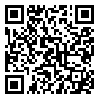Volume 13, Issue 2 (1-2014)
ijdld 2014, 13(2): 182-187 |
Back to browse issues page
Download citation:
BibTeX | RIS | EndNote | Medlars | ProCite | Reference Manager | RefWorks
Send citation to:



BibTeX | RIS | EndNote | Medlars | ProCite | Reference Manager | RefWorks
Send citation to:
Moazami Goodarzi H, Larijani B, Keshtkar A, Khashayar P. PREVALENCE AND ASSOCIATED FACTORS OF T-SCORE DISCORDANCE BETWEEN LUMBAR SPINE AND FEMORAL NECK IN POSTMENOPAUSAL WOMEN: A 11-YEAR IROSTEOPS STUDY . ijdld 2014; 13 (2) :182-187
URL: http://ijdld.tums.ac.ir/article-1-5114-en.html
URL: http://ijdld.tums.ac.ir/article-1-5114-en.html
1- , emrc@tums.ac.ir
Abstract: (7032 Views)
Background: Discordance (the presence of different categories of T scores in two skeletal sites of a
single patient) can affect the physician’s decision to start medication or not. The present study was
therefore conducted to assess the prevalence of T-score discordance between spine and femoral neck
as well as its risk factors in a group of postmenopausal Iranian women.
Methods: The present analytical cross sectional research was conducted based on the results of
IROSTEOPs study on 8146 postmenopausal women referred to the bone mineral density (BMD)
center of Shariati Hospital affiliated to Tehran University of Medical Sciences between 2000 and
2011. Based on their BMD results, the patients were categorized into three groups: Concordance and
Minor and Major discordance. The factors affecting the risk of developing discordance was then
studied through uni/and multivariate logistic regression.
Results: Discordance between spine and femoral neck was reported in 3741 (45.9%) of the
participants. Multivariate logistic regression revealed that older age, higher number of pregnancies and
higher body mass index (BMI) are the main risk factors for T-score discordance at the studied sites.
The use of hormonal replacement therapy (HRT) on the other hand played a protective role.
Conclusion: It could be concluded that performing BMD at two different sites is necessary for the
Iranian population, particularly postmenopausal women.
Type of Study: Research |
Subject:
General
Received: 2014/03/4 | Accepted: 2014/03/4 | Published: 2014/03/4
Received: 2014/03/4 | Accepted: 2014/03/4 | Published: 2014/03/4
Send email to the article author
| Rights and permissions | |
 |
This work is licensed under a Creative Commons Attribution-NonCommercial 4.0 International License. |





